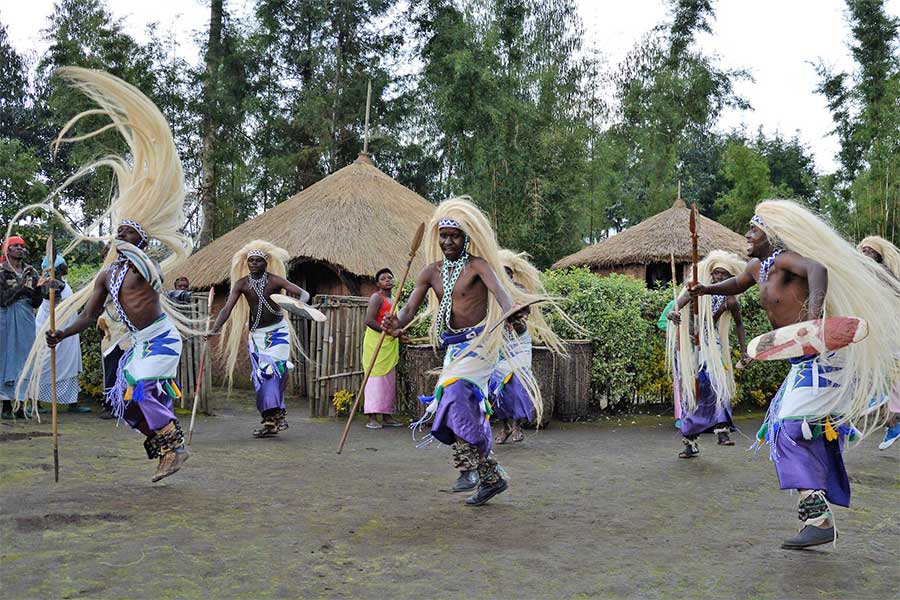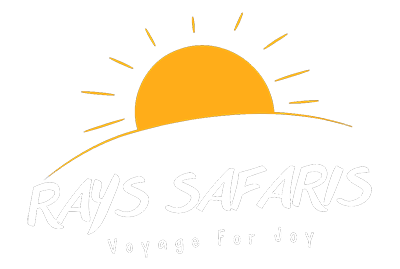Rwanda
Rwanda is a landlocked country with a thousand hills, moderate climate, diverse natural beauty and amazing cultures. Bordering Uganda to the North, Tanzania to the east, DR Congo in the west and Burundi to the south. With 5 volcanoes, 23 lakes, numerous rivers, hills, savannah plains, Rwanda is a top tourism destination in Africa. While in Rwanda, you shouldn’t miss the chance to enjoy primate tracking. Common primates found include chimpanzees, golden monkeys, collobus monkeys, baboons and more. Gorilla Trekking is also one of the common activities tourists have loved to do while in Rwanda. The mountain gorillas are found in the Volcanoes National park and over a third of the world’s remaining gorillas live here.
RWANDA GEOGRAPHY
Rwanda is one of the world’s most densely populated countries. The country is divided by great peaks of up to 3,000m (9,842ft) which run across the country from north to south. To feed the people, almost every available piece of land is under cultivation except for parts of the Akagera (along the border with Tanzania) and the higher slopes of the Volcanoes. Since most of the country is mountainous, this involves a good deal of terracing. The Virunga volcanoes, rising steeply from Lake Kivu in the west, slope down first to hilly central plateau and further eastwards to an area of marshy lakes around the upper reaches of the AKagera River, where the Akagera National Park is situated.
The country’s scenery is much mountainous and the Karisimbi is regarded as the highest peak at 4,507 on the Virunga Volcanic ranges and the lowest point in Rwanda is the Ruzizi River, at 950 m (3,117 ft) above sea level. Lake Kivu is the country’s largest main fresh water body. And Ruzizi river valley forms the western boundary with the Democratic Republic of the Congo (formerly Zaire) and constitute part of the Great Rift Valley. There also other small lakes and Rivers such as Ruhondo, Burera, Muhazi, Ihema, Mugesera and River Akagera. Rwanda is also located on the eastern edge of the Albertine Rift which is a western wing of the Great Rift Valley and all these places attract a number of travelers’ whole over the world to Rwanda to explore more about the country.
CLIMATE
Even though Rwanda is located only two degrees south of the equator, Rwanda’s high elevation makes the climate temperate. The average daily temperature is near Lake Kivu; at an altitude of 4,800 feet (1,463 m) is 73 °F (22.8 °C). The average day time temperature is 24°C with a possible maximum of 30°C. There are four noticeable seasons, the long dry season is from mid-May to September, and the long dry season is from mid-May to September, the short rains from October to mid-December to mid-march. Heavy downpours occur almost daily, alternating with sunny weather. Rainfall is generally heavier in the western and northwestern mountains than in the eastern savannas. The summit of Karisimbi (4507m), the highest of these volcanoes, is often covered with hail or snow.
CULTURE & TRADITION
Rwanda is a country of mainly three groups of people these are the Hutu, Tutsi, and the Twa. The Hutu dominates other groups with over 84%, the Tutsi with 15% and the Twa 1%. The culture of Rwanda is varied. Unlike many countries in Africa, Rwanda has been a unified state since pre-colonial times, populated by the ‘Banyarwanda’ people who share a single language and cultural heritage.
Music and dance are an essential part of Rwandan ceremonies, celebration, social gatherings and storytelling. The most well-known traditional dance is the umushagiriro or cow dance performed by women. The dance of heroes is performed by men and the drumming also traditionally performed by men on drums known as ingoma. Music is transmitted orally with styles varying between the social groups. Rwanda’s most known dance group is the National Ballet and this dance was acknowledged by President Habyarimana in 1974.
Drums are of great importance; the royal drummers enjoyed high status within the court of the King – Mwami Drummers and the dance is usually played between seven and nine in number. Although the country has a growing popular music industry with very many musicians most of them are influenced by East African, Congolese, and American music. The most popular genre is hip hop, with a blend of rap, ragga, R&B and dance-pop.

PEOPLE
The population is young and predominantly rural; Rwanda has one of the youngest populations in the world, with the average age being 19 years. Rwandans are drawn from just one cultural and linguistic group, the Banyarwanda. However, within this group there are three subgroups: the Hutu, Tutsi and Twa. The Twa are a forest-dwelling pygmy people and are often considered descendants of Rwanda’s earliest inhabitants. Hunter-gatherers settled the territory in the Stone and Iron Ages, followed later by Bantu peoples.
FOOD
Rwandan food is neither spicy nor hot. People eat simple meals made with locally grown ingredients. The Rwandan diet consists mainly of sweet potatoes, beans, corn, peas, millet, plantains, cassava, and fruit. The potato is now very popular, thought to have been introduced by German colonists.
Rwandans who live in rural areas rarely eat meat. Some families have cattle, but since cattle are considered a status symbol, people seldom slaughter them for meat. In urban areas meat is more plentiful. The most popular meats are beef and chicken. A traditional breakfast consists of sweet potatoes and porridge. Lunch and dinner may consist of boiled beans, bananas, sweet potatoes or cassava. Umutsima (a dish of cassava and corn), isombe (cassava leaves with Eggplant and spinach) and mizuzu (fried plantains) are common dishes. Dinner is the heaviest meal.
Between meals, Rwandans often snack on fruits. Tropical fruits such as avocados, bananas, mangos, pineapple, and papaya are abundant in Rwanda. Roadside vendors in urban areas sell roasted corn and barbecued meat.
